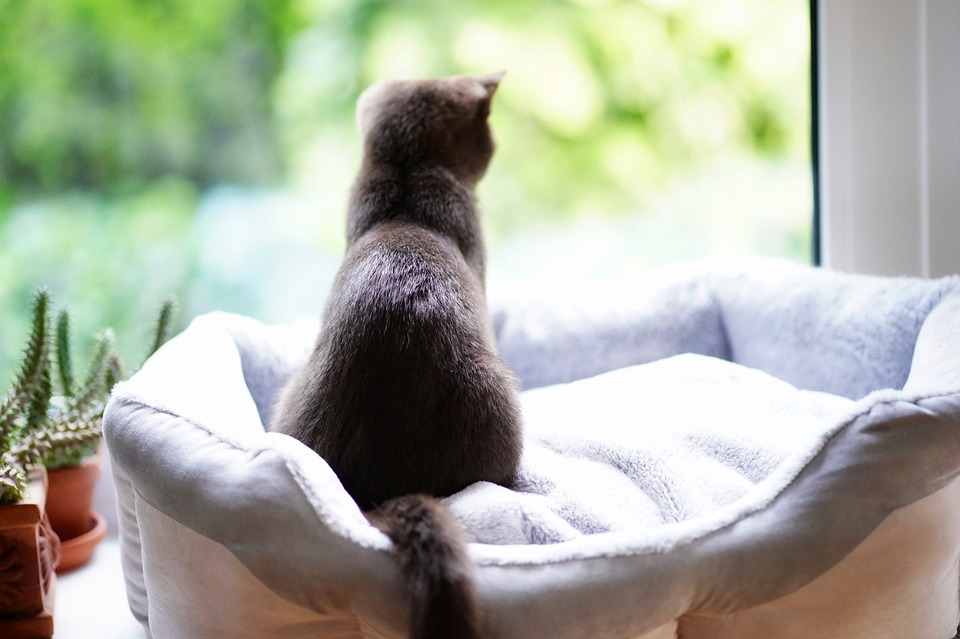Header 1: Introduction
As cat owners, we want to ensure the safety and well-being of our feline companions. An important aspect of this is teaching our cats proper door etiquette, specifically, how to wait at doors and not rush through doorways. In this article, we will explore effective techniques to train your cat to wait patiently, as well as address common questions and concerns.
Header 2: Why is Doorway Etiquette Important for Cats?
Doorway etiquette is crucial for the safety of your cat. By teaching your cat to wait at doors, you minimize the risk of them darting outside and potentially getting lost, injured, or exposed to dangerous elements. Additionally, it helps prevent accidents such as doors closing on their tails or paws, which can be painful and distressing for your furry friend.
Header 3: Step-by-Step Guide: Teaching Your Cat to Wait at Doors
1. Start with Basic Training: Before diving into doorway etiquette, ensure your cat has a good grasp of basic commands such as “sit” and “stay.” This foundation will make the training process smoother.
2. Create a Safe Space: Designate a specific area near the door as a safe space for your cat. This can be a mat or a spot with their bed or toys where they feel comfortable.
3. Practice “Sit” and “Stay” near the Door: Gradually introduce your cat to the safe space near the door. Use positive reinforcement techniques, such as treats or praise, to encourage them to sit and stay in that area.
4. Introduce the Door Opening: Now that your cat is comfortable near the door, open it slightly. If your cat remains in their designated space, reward them with treats and praise. If they attempt to rush through, calmly close the door and try again.
5. Add Distractions: To simulate real-life scenarios, introduce distractions while opening the door, such as someone ringing the doorbell or knocking. Train your cat to remain in their spot despite the noise or commotion.
6. Gradually Increase Difficulty: With time and practice, increase the level of difficulty by opening the door wider or having more distractions. Ensure that your cat consistently waits before progressing to the next level.
Header 4: Frequently Asked Questions (FAQs)
Q1: What if my cat is too anxious or fearful to wait at doors?
A1: If your cat shows signs of anxiety or fear, it’s important to address these issues before training them for doorway etiquette. Consult with a veterinarian or a professional animal behaviorist to develop a tailored plan to help your cat overcome their anxiety.
Q2: Can I use negative reinforcement to train my cat to wait at doors?
A2: Negative reinforcement, such as scolding or punishing, is not recommended as it can create fear and anxiety in your cat. Positive reinforcement, using treats, praise, or playtime, is a much more effective and humane way to train your cat.
Q3: How long does it usually take to train a cat to wait at doors?
A3: The training duration varies depending on your cat’s personality and previous training experiences. Some cats may learn quickly within a few weeks, while others may require several months of consistent practice. Patience and consistency are key.
Q4: What if my cat still rushes through doorways despite training?
A4: If your cat occasionally forgets their training and rushes through doorways, continue reinforcing the desired behavior. Consider using baby gates or temporarily confining your cat in a safe area when doors are frequently being opened.
Header 5: Conclusion
Teaching your cat to wait at doors is a valuable skill that promotes their safety and prevents accidents. By following the step-by-step guide and being patient and consistent, you can successfully train your feline friend to exhibit proper doorway etiquette. Remember, positive reinforcement is the key to effective training. Happy training, and may your cat master the art of waiting patiently!








